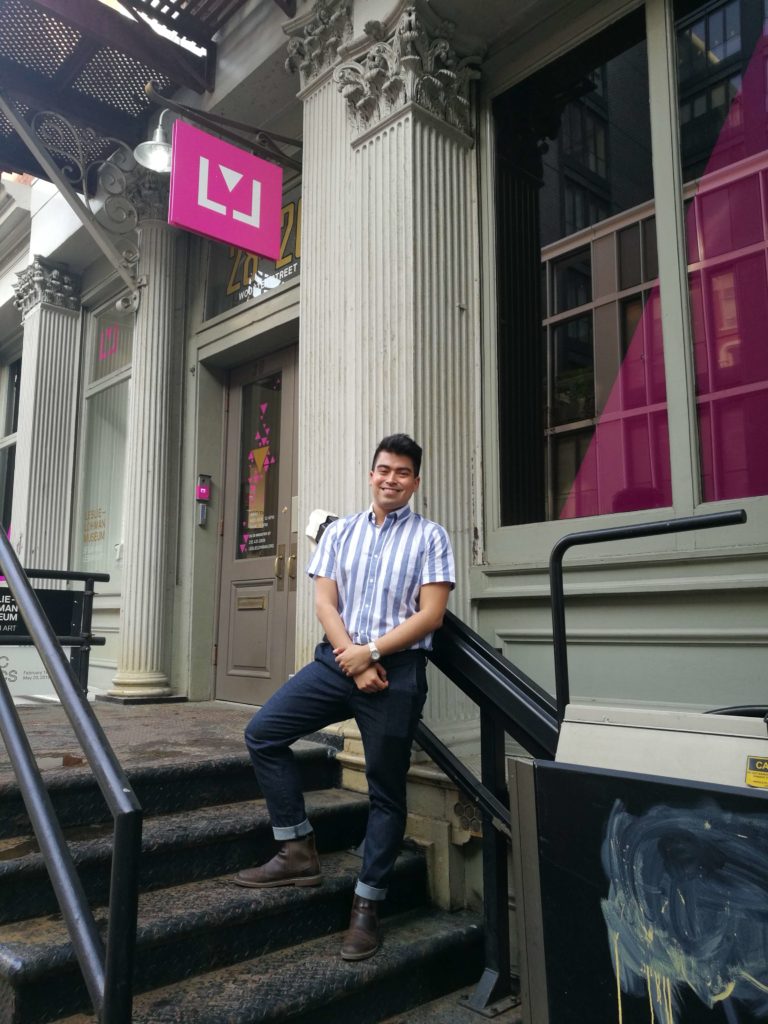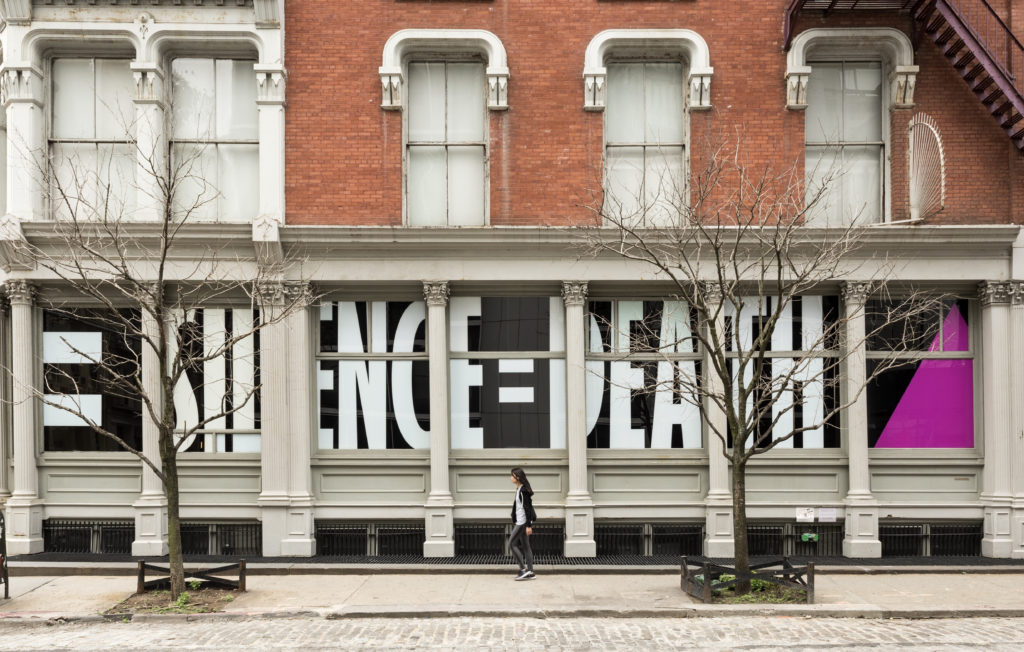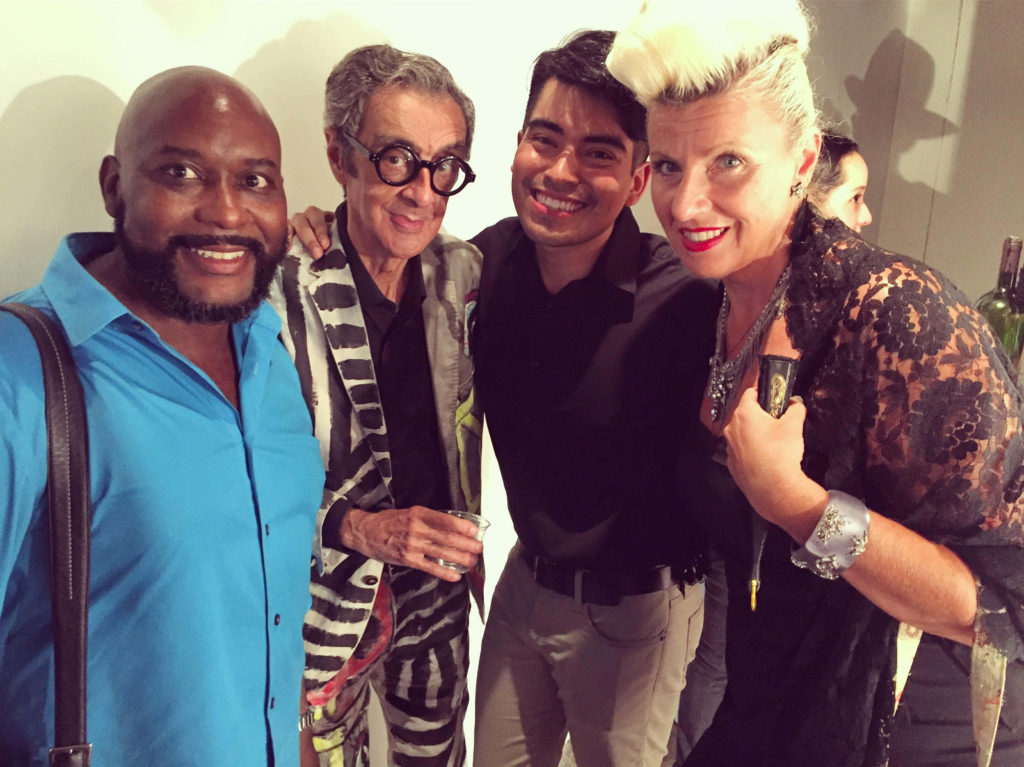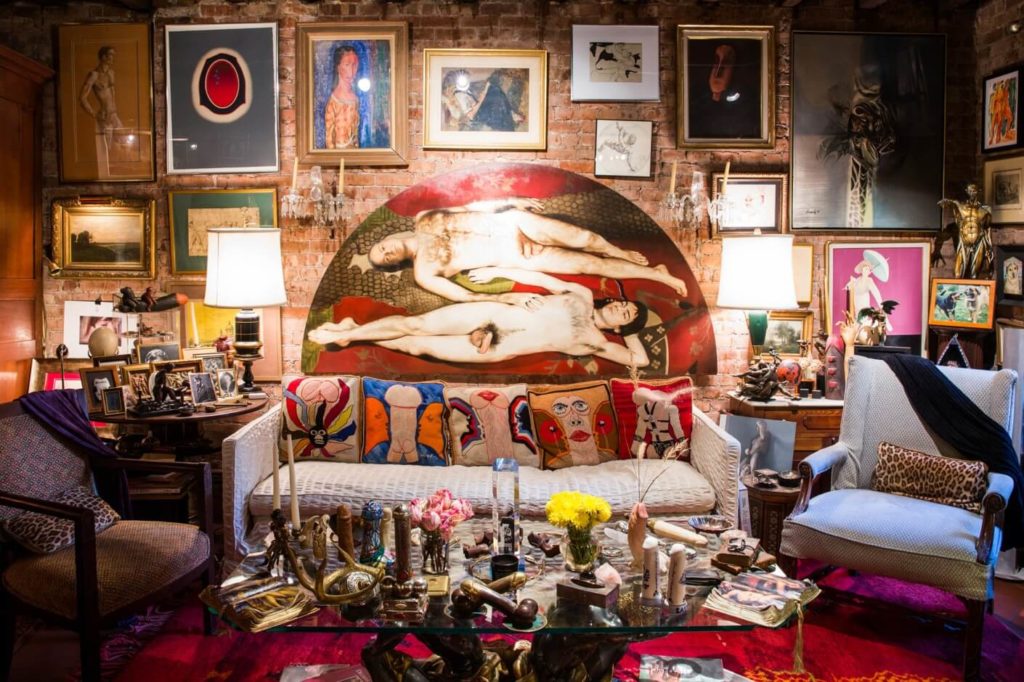Interview with the New Director of Development at the Leslie-Lohman Museum: “I Want People to Understand That the Queer Experience Connects Us All”
Eduardo Ayala Fuentes, the newly appointed Director of Development at the Leslie-Lohman Museum of Gay and Lesbian Art, receives me in the galleries. It’s dark as the museum is closed but Ayala Fuentes turns the lights on. Ayala Fuentes specializes in, bringing money to institutions, so that they can pay their electricity bills, among other things. He has held positions in development at El Museo Del Barrio and most recently The High Line. He talks about the importance of understanding the history of an institution to innovate development as he takes me on a tour of the two current exhibitions.
In 1969, the art collecting couple Charles Leslie and Frederic “Fritz” Lohman held their first exhibition. Since then, the Leslie-Lohman Museum has promoted the work of LGBTQ artists, stewarding a collection of over 22,000 objects.
The museum is located on Wooster Street in Soho. Although upscale boutiques have replaced the iconic artist lofts, there are a handful of art organizations and galleries that carry on the neighborhood’s legacy to the arts. Downtown New York has also been the stage for gay rights activism and the nexus of the LGBTQ community since the 1960’s. Fundraising and patronage have and will continue to play a key role in the institution’s ability to support local artists and survive in the area. Now, Ayala Fuentes is proud to carry on this legacy, continuing to sustain the important queer space.
Anna Mikaela: You are certainly having a whirlwind career in the field of development in the New York museum world. How did you first get into development?
Eduardo Ayala Fuentes: Thank you! I’m thrilled to be part of the Leslie-Lohman Museum’s team as the new Director of Development, particularly through shaping the way that we fundraise. My first role in development was working in corporate relations for the Americas Society/Council of the Americas. It was the institution that drew me to the role, but I grew to love the work and how tied fundraising is to advancing the mission of an organization.
How do you prepare yourself for new positions and the transition to a new institution?
Starting new roles can be complicated because you’re in a frenzy with ideas for the potential that you see in an organization. There needs to be a drive that brings you to a new role. I’m also interested in learning about what’s already happening, and where my new position falls within existing initiatives. It’s helpful for me to learn about an organization before jumping in and pushing new ideas, and to understand the existing dynamics before considering new initiatives.
The iconic AIDS awareness poster “Silence=Death” reimagined for Leslie-Lohman’s facade, 2017-18. Photograph courtesy of Leslie-Lohman Museum of Gay and Lesbian Art.
What is trending in development and fundraising today?
I’m really excited about how digital fundraising can directly engage the communities that are following an organization’s work. We recently launched a Kickstarter to support the new QUEERPOWER public art installation that the artist collective Fierce Pussy is installation on the Leslie-Lohman Museum’s façade. It’s been incredible to see people rally behind an initiative and engage their own network in support of an institutional initiative. This is something for all of us to take the credit for – whether you gave $10 or $5,000 – we all took part in the community. This is a great example of the opportunities that digital initiatives can bring to fundraisers.
That’s amazing! I noticed that the Kickstarter link is under your signature in your emails, smart. Which museums, or development officers, do you think are doing the most exciting fundraising right now?
I love the work that the Public Art Fund and the High Line are doing to engage people around public spaces, and how they’re getting artists to think about their practice in the public realm. This is an essential conversation for our time: what is public space, and who can access and benefit from it? Honoring our spaces is pivotal for our society to continue evolving and creating discourses for art to flourish.
It seems to me that in addition to being a way to support local artists and those involved in your community that Leslie-Lohman’s project space is a vehicle for increased fundraising. Am I right, and if so how?
The Leslie-Lohman’s Prince Street Project space is a great place for emerging artists to exhibit their work. This brings new audiences and networks to the museum, which inevitably means bringing in new potential supporters. It also connects our audience with new artists who they may want to support and collect themselves.
I love the Random image search button on Leslie-Lohman’s website. What is your favorite work of art in the collection?
During my first day on the job, my colleague Brendan Wallace, the museum’s registrar for the collection, showed me some of the latest donations and acquisitions he was cataloging. To me, that’s the most impressive part of our collection – the people behind the scenes who are connecting the dots and bringing the histories of these artworks to light. From day one, I knew that I was exactly where I needed to be fundraising. The work our team is doing is unique and needs all of our support.
Anthony Meyers from the Department of Cultural Affairs, the Leslie-Lohman Board Member Robert Richards, Eduardo Ayala Fuentes, Leslie-Lohman Board Member Cynthia Powell. Photograph courtesy of the Leslie-Lohman Museum of Gay and Lesbian Art.
Who is the person that you are dreaming would patron the museum?
I’m stewarding the community of supporters who have stood by this institution through the ups and downs that queer communities have faced throughout the years. That, to me, is crucial to keep close to us and never lose sight of. I’m also looking for the next generation of young, queer philanthropists, promoters, and art professionals. Those who are engaging with young queer artists and patronizing their work. They need to know that they have an institution that shares their values, that is available to strengthen their work. My dream and personal vision is to make those connections for our community.
Whether we are conscious of it or not, queer artists and their experiences have influenced us. That fact should be enough for all of us to continue support queer artistry.
Eduardo Ayala Fuentes
Come to think of it, at El Museo del Barrio you also worked with an institution which is based on Latino identity as its area of specialization. Leslie-Lohman Museum is similar in sorts as its mission is to promote gay and lesbian art and artists. In comparison to the High Line for instance, how is it to work with a museum that bases its mission on identity?
Identity politics are complex, but I want people to understand that the queer experience connects us all, even if we don’t identify as such. We live in New York City, where queer artists have been at the avant-garde of artistry for years, changing the face of art worldwide. Whether we are conscious of it or not, queer artists and their experiences have influenced us. That fact should be enough for all of us to continue support queer artistry. Imaging what queer artists could provide with the right support, rather than the homophobia that has plagued their work in the past few decades – particularly around the AIDS crisis.
Charles Leslie’s Apartment, 2017. Photographed by Alec Kugler for Covateur.
The Leslie-Lohman Museum grew from the love between Charles W. Leslie, a performing artist and Frederic “Fritz” Lohman, an interior designer and their shared interest in collecting homoerotic art. The couple met in New York in the 1960’s. Lohman passed away in 2009 but Leslie is still active in the museum. Who is Charles Leslie today? And, how active is he in running the museum?
Charlie Leslie is still very much a part of the museum – he and Fitz always will be. He was so welcoming when I started my role, and he opens up his museum and art-filled home to all. I’m striving to continue that and to be as welcoming and engaging as possible. Making genuine connections with people is what development is all about.
How has the makeup of your audience changed over time? Do you cater to a gay public or is your public diverse?
The queer community is and has always been diverse. We as an institution have been opening up to that as well. It’s a way of honoring our communities’ history, and also engaging new, diverse audience’s that need to know that this space is theirs as well. Our exhibitions, programming, and even our staff need to be a reflection of that. And we’re doing that. I’m definitely striving to bring a diverse array of supporters to the museum. Fundraising is all about diversity, in strategies that diversify funding sources, and the people who are making it happen.
What are your ideas about the museum as an institution, what is the state of the current museum ecology in New York and what shifts do you think we will see going forward?
I see fluidity in many regards. People identify in a myriad of ways today and don’t pigeonhole their interests, or themselves. That’s where fundraising is headed as well. People want to know their options and make educated decisions about where to get involved. I see our spaces as needing one another, collaborating to develop greater awareness, and partnering to connect people with spaces that meet their interests. Museums are a part of that network for sure and need to be aware of their impact. It’s an exciting time for arts and culture as a whole. And in today’s day and age, there’s certainly enough support and talent to go around. We just need to cultivate it.
I know you just started at Leslie-Lohman, but what are your aspirations for the future?
I look forward to more people learning about the Leslie-Lohman. Museum. As long as we are connecting people, allowing them to see themselves reflected in our space, then we are creating good in the world. And if we’re building a sustainable future for the museum to continue growing while we’re at it, what could be better?
If you want to support the museum go to LIVE LOUD NOW: fierce pussy, their summer benefit on June 6th, tickets $85-$200.
What's Your Reaction?
Anna Mikaela Ekstrand is editor-in-chief and founder of Cultbytes. She mediates art through writing, curating, and lecturing. Her latest books are Assuming Asymmetries: Conversations on Curating Public Art Projects of the 1980s and 1990s and Curating Beyond the Mainstream. Send your inquiries, tips, and pitches to info@cultbytes.com.





